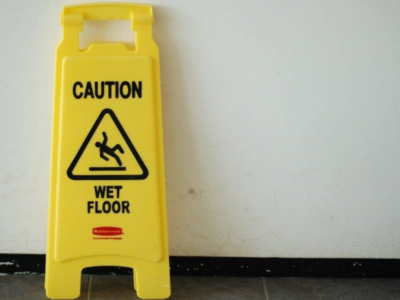Deep American history roots run through Pennsylvania, the center to the founding of the United States. Philadelphia, Pennsylvania is home to the Independence Hall and Liberty Bell. This was where the Declaration of Independence was signed as well as the city is known as the home of our founding fathers William Penn and Benjamin Franklin. But, this state is also one of the few states in this country that has a rather long history of mining asbestos. It is also the 3rd ranking in the United States for Mesothelioma as well as asbestosis deaths. If you have been diagnosed with Mesothelioma and you live in Pennsylvania, then visit with the attorneys at Pennsylvania Mesothelioma Law Firm
Mining
Coal mining is associated largely with the regions in western Pennsylvania, but archives from the “United States Geological Survey” specify that 4 asbestos mines formerly located in the southeastern area of this state. The exact type of the asbestos found in these mines is called amphibole. One sub-type of amphibole asbestos, crocidolite, is believed to be the most dangerous type of asbestos due to the fibers’ tendency to stay in the lungs for much longer periods of time. This develops the opportunity for Mesothelioma cancer.
Mineral substance
Asbestos is a natural mineral element that can be drawn into a consistency that is fluffy. Fibers of asbestos are flexible and soft yet resilient to electricity, heat and corrosion by chemicals. Untainted asbestos is an insulator that is very effective, and it also can be combined with paper, cloth, plastic, cement, and other supplies to make them much stronger.

Profitable
These qualities once made asbestos quite profitable for business, unfortunately, they also made asbestos highly toxic.
Asbestos facts
- Refers to a group of fibrous, and heat-resistant minerals;
- Once an ingredient common in American construction materials;
- Fibers that are microscopic can become trapped in the body causing disease over time;
- Industry executives covered up health dangers for decades.
Asbestos and Natural Disasters
Natural disasters, such as earthquakes, hurricanes, floods, tornadoes and fires, can harm materials that contain asbestos in ways that can cause asbestos exposure among crews for cleanup and first responders. Wearing protective material and using correct asbestos reduction methods help to reduce workers to asbestos exposure.
Natural disasters
Natural disasters pose dangers from the moment the disasters occur, and the aftermath present safety concerns. The accessibility of electricity, shelter, water, food and medical care are primary concerns. These natural disasters also pose a threat of exposure asbestos to those people helping in any recovery efforts.
Homes and buildings
Many commercial buildings and homes constructed prior to the 1980s were built using asbestos materials. Those products were considered safe if they were in good condition. But once they rip open, break apart, burn, blown or washed away, these products released asbestos fibers into the air.
First responders
As the first people on the scene, emergency response crews and early response volunteers face an ever-increasing risk for asbestos exposure in the wake of a natural disaster. The risk of health effects to these workers increases over time and depends upon how many times they are exposed to asbestos. The more someone is exposed to asbestos on the job, the higher the risk of developing asbestos-related disease such as lung cancer and Mesothelioma.
High risk occupations
Firefighters, law enforcement, and cleanup crews are all considered high-risk occupations for asbestos exposure after natural disasters. Homeowners of damaged properties also face these risks and should always use caution when cleaning or searching through debris.

Set of circumstances
Every natural disaster has a set of situations which fibers o asbestos can be freed and ingested or inhaled. Examples of natural disasters which are feared by officials due to exposing the public to asbestos include tornadoes in Missouri and Alabama, hurricanes in Texas, Louisiana, Florida and New Jersey and fires in California.
Natural Disasters in the News
- Hurricane Maria;
- Hurricane Sandy;
- Hurricane Katrina;
- Alabama tornadoes;
- Japan Earthquake Tsunami
Exposure prevention tips after disaster
If materials containing asbestos materials are believed to be in the area being cleaned up, experts recommend you simply leave them alone. Upsetting debris containing asbestos can cause asbestos fibers to go airborne and exposure is very likely at that point.
Common custom materials having asbestos
- Pipe lagging;
- Roofing felt;
- Adhesive;
- Block insulation;
- Appliance components;
- Cement board;
- Ceiling products;
- Gardening products;
- Flooring;
- Paints;
- Roofing;
- Table pads;
- Insulation;
- Fireplace decorations;
- Electrical insulation and panels;
- Taping compounds and plasters;
- Heating and cooling systems.
Some communities received No Action Assurance letters from the United State Environmental Protection Agency (EPA) following a disaster. This is a policy allows flexibility regulatory rules during cleaning up of structures that are damaged and might contain asbestos. Such letters are only sent during times of hardship extreme.
What happens next
Once these letters are received, structures with asbestos can be wrecked without getting rid of asbestos but then all the debris must be accomplished under regular asbestos guidelines. No Action Assurance letters were dispersed to many neighborhoods in New Orleans after Hurricane Katrina. If this occurred in your area, wear masks and other protective equipment to limit exposure possibility.
Various natural disasters
Various types of natural disasters offer a diversity of risks of exposure. An example is tornados can carry debris with asbestos from one site to another mile away, while flooding might pollute neighborhoods and waterways and with asbestos supplies. Fires are an even greater risk to firefighters than other emergency responders. Hurricanes poses a much larger risk to firefighters than other emergency responders. Hurricanes also pose a diversity of threats of exposure from related flooding and tornadoes.
Fires
Fires and asbestos have a history that is intriguing. Asbestos is one of the materials that is the most heat-resistant material known to man, but it also can be highly toxic when damaged by fire.
For a better portion of the 19th century and the majority of the 20th century, goods made with asbestos or with some asbestos were used to keep houses, buildings, ships, pipes and other items from getting too hot and then starting fires. But when structures catch fire, these asbestos products become damaged and release fibers that are carcinogenic and become airborne and transportable by smoke.












Comments